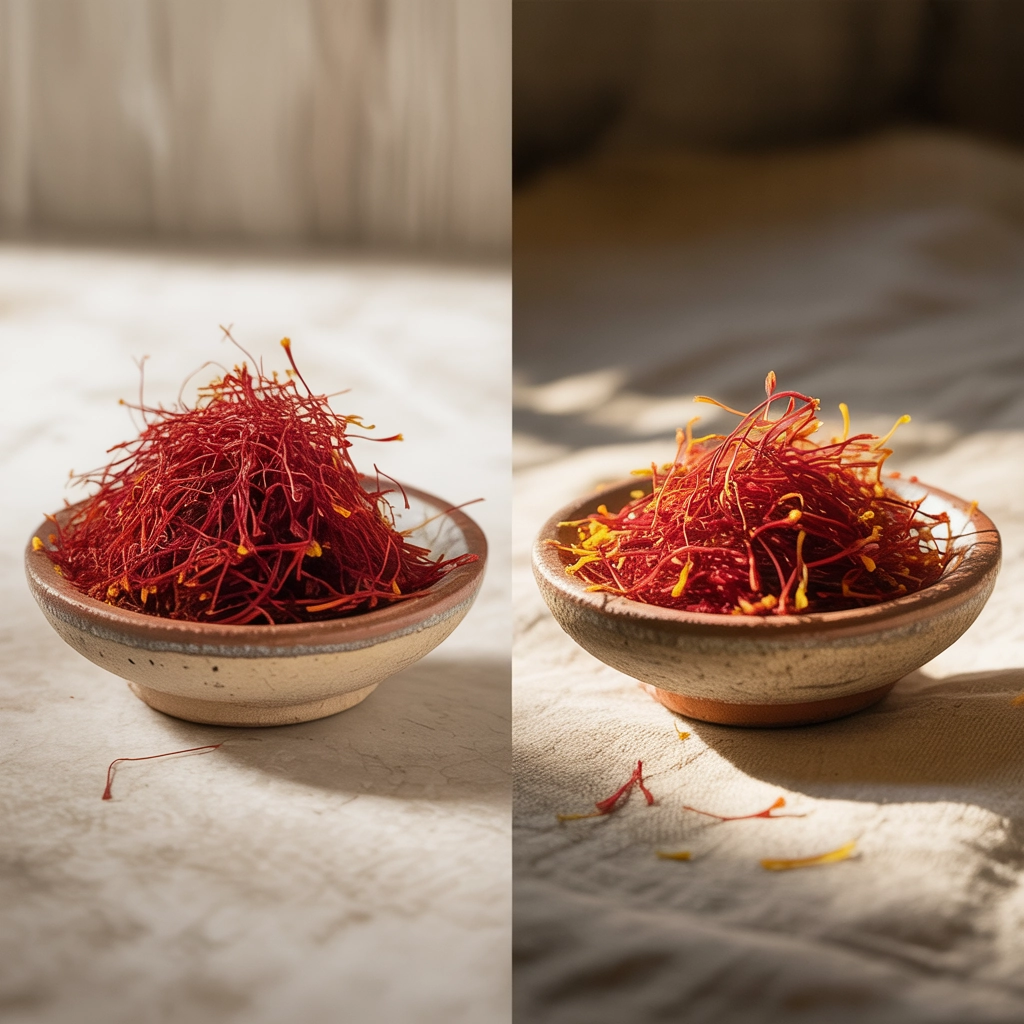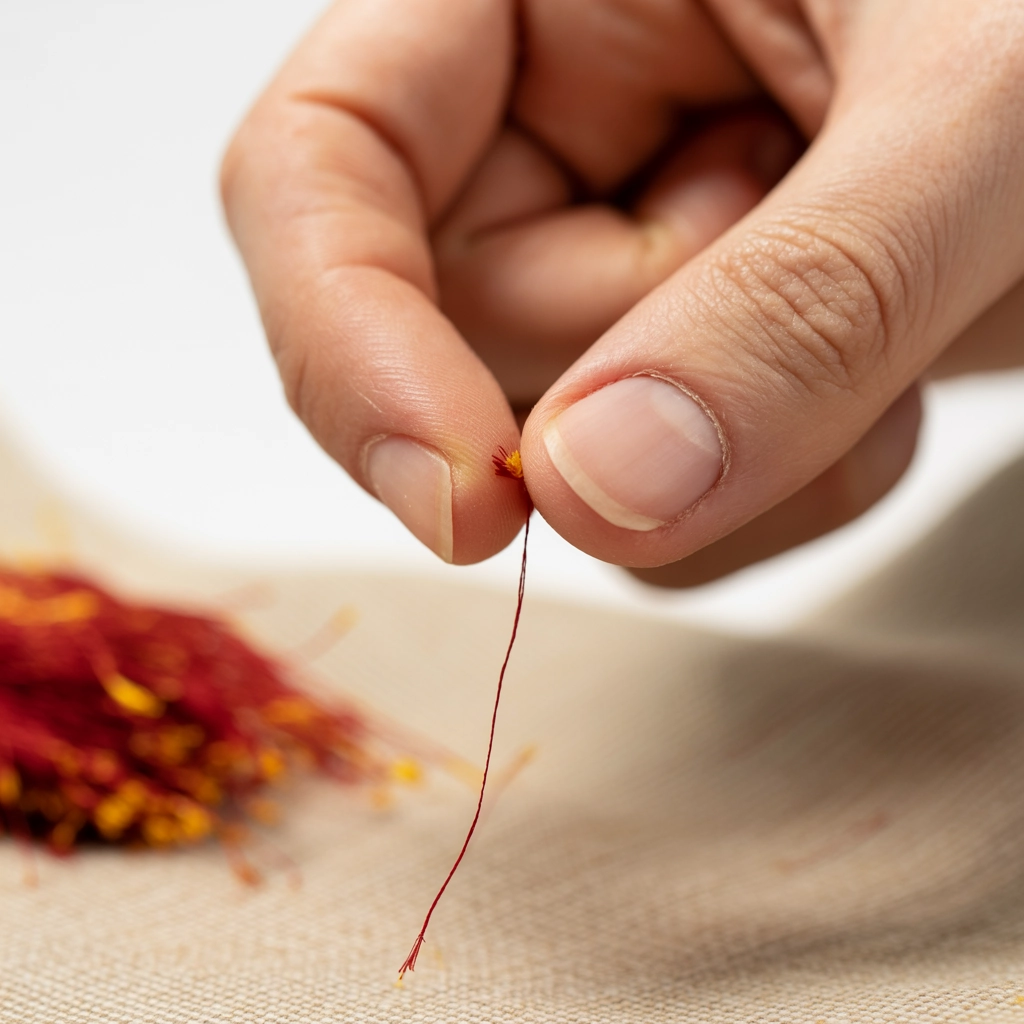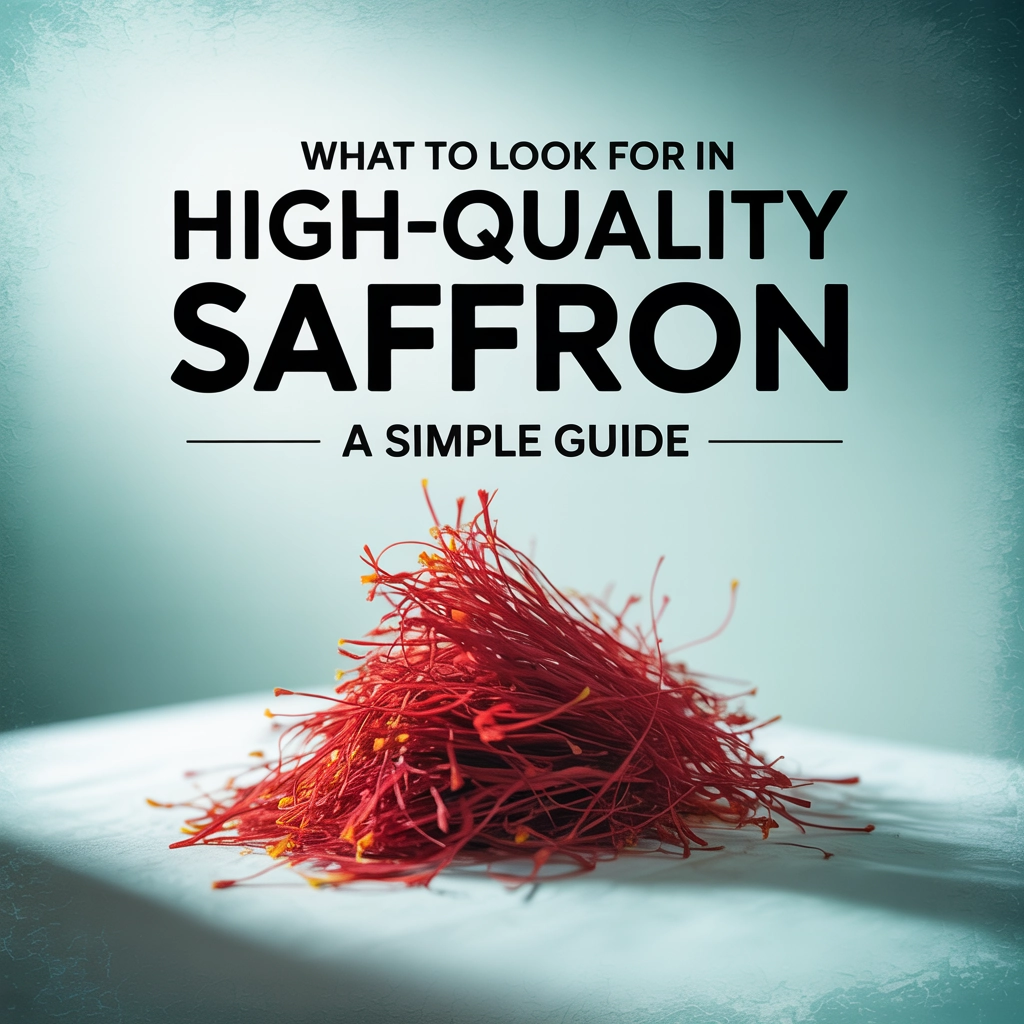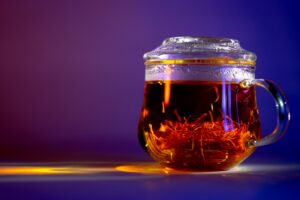The Golden Standard: Identifying Premium Saffron
Saffron, often called “red gold,” is one of the world’s most precious spices. Its distinct flavor, aroma, and color have made it a coveted ingredient in cuisines across the globe for thousands of years. But with prices ranging from $5 to $500 per ounce, how can you be sure you’re getting authentic, high-quality saffron?
At Zarafron, we believe everyone deserves to experience true saffron. That’s why we’ve created this comprehensive guide to help you identify premium saffron and avoid common counterfeits.
Why Quality Matters
Before diving into the details, let’s understand why quality matters so much with saffron:
- Potency: High-quality saffron contains higher concentrations of its key compounds—crocin (responsible for color), picrocrocin (taste), and safranal (aroma).
- Value: Premium saffron might cost more upfront, but you’ll need less of it to achieve the desired effect in your dishes.
- Experience: The difference between premium and low-grade saffron is immediately noticeable in every sensory aspect.
1. Color & Appearance: The Visual Test
The first thing you’ll notice about saffron is its striking color. This visual assessment can tell you a lot about its quality.
High-Quality Saffron:
- Features vivid, deep red threads with orange-yellow tips
- Contains uniform, unbroken strands
- Shows consistent coloration throughout the threads
- Maintains its color intensity even when stored properly
Low-Quality Saffron:
- Appears pale, dull, or predominantly yellow
- Contains broken, frayed, or crushed threads
- May include foreign plant material mixed in
- Shows uneven coloration or suspicious uniformity (possible dye)
Pro Tip: If saffron threads are completely red with no orange-yellow tips, be cautious, they might be artificially dyed to mask poor quality.

2. Aroma: The Scent Test
Premium saffron’s aroma is distinctive and impossible to replicate artificially. When you open a container of high-quality saffron, its scent should immediately capture your attention.
High-Quality Saffron:
- Releases a sweet, earthy fragrance with subtle honeyed notes
- Has a complex, aromatic profile that’s both floral and grounding
- Maintains its aroma even after storage (though it may mellow slightly)
- Creates an immediate sensory impression
Low-Quality Saffron:
- Produces little to no aroma when opened
- May smell musty, bitter, or “off”
- Could have chemical undertones suggesting artificial additives
- Fails to deliver that characteristic saffron scent
Expert Insight: To properly assess aroma, gently crush a few threads between your fingers and then smell. This releases the volatile compounds that give saffron its signature scent.
3. Taste: The Flavor Profile
True saffron has a complex flavor profile that develops on the palate. While you probably won’t taste raw saffron threads, understanding its flavor helps when evaluating saffron-infused dishes.
High-Quality Saffron:
- Delivers a subtle yet complex flavor profile
- Tastes slightly sweet and floral with a distinctive honey-like quality
- Features a gentle bitterness that balances the sweeter notes
- Creates a lingering, pleasant aftertaste
Low-Quality Saffron:
- Presents a flat, one-dimensional flavor
- May taste metallic or artificially sweet
- Could have an unpleasant bitterness that overwhelms other flavors
- Fails to impart significant taste to dishes
Culinary Test: Steep a few threads in warm (not hot) water for 20 minutes. High-quality saffron will turn the water a golden yellow and impart its distinctive flavor. The water should taste pleasant, not bitter or metallic.
4. Texture: The Physical Test
The physical condition of saffron threads offers valuable clues about quality and handling.
High-Quality Saffron:
- Feels dry to the touch but retains slight flexibility
- Doesn’t crumble easily when handled gently
- Shows a clean break when bent (not mushy)
- Maintains its structural integrity during storage
Low-Quality Saffron:
- Feels brittle and shatters at the slightest touch
- May appear powdery or dusty
- Could feel damp or sticky (indicating poor drying practices)
- Breaks down easily during storage
Handling Tip: Premium saffron should be slightly brittle but not so fragile that it turns to powder when handled.

5. Purity: The Authenticity Test
Counterfeit saffron is unfortunately common. Here’s how to ensure you’re getting pure saffron without adulterants.
High-Quality Saffron:
- Contains 100% pure saffron stigmas with no fillers
- Shows natural variation in thread appearance
- Dissolves slowly in water, releasing color gradually
- Passes the “bleed test” (see below)
Low-Quality or Fake Saffron:
- May include safflower, calendula, or corn silk fillers
- Could contain turmeric or food coloring to mimic saffron’s color
- Often includes dyed thread-like materials that aren’t saffron
- Might incorporate ground parts of the saffron flower besides the stigmas
The Bleed Test: Place a few threads in warm water. Genuine saffron releases color slowly, gradually turning the water golden yellow. Fake saffron with artificial coloring will “bleed” color immediately and often turn the water a bright yellow or orange.
Scientific Standards: ISO Certification
For those seeking objective confirmation of quality, look for ISO 3632 certification. This international standard classifies saffron into categories based on:
- Crocin content: Determines color strength
- Picrocrocin level: Measures bitterness/flavor
- Safranal concentration: Indicates aroma intensity
Category I saffron represents the highest quality, with lesser grades falling into Categories II, III, and IV.
Tips for Buying Premium Saffron
Knowing what makes saffron high-quality, here are practical tips for your next purchase:
- Choose whole threads over powder: Powdered saffron is much easier to adulterate and harder to assess visually.
- Check for ISO certification: Reputable sellers will have their saffron tested and certified.
- Research the source: Saffron from traditional growing regions like Iran, Kashmir, Spain, and Greece often (but not always) indicates higher quality.
- Look for transparency: Quality producers share details about their sourcing, harvesting, and testing processes.
- Beware of bargains: If the price seems too good to be true, it probably is. Premium saffron requires intensive hand-harvesting—each flower produces only three stigmas.
- Store properly: Once purchased, store your saffron in an airtight container away from light and heat to maintain its quality.

Traditional Uses Beyond Cooking
While we often think of saffron in culinary applications, its uses extend far beyond the kitchen. For centuries, saffron has been valued for its:
- Medicinal properties: Traditional healing systems have used saffron for everything from melancholy to menstrual discomfort.
- Ceremonial significance: Across Abrahamic traditions, saffron has symbolized divine presence and spiritual purity.
- Dyeing capabilities: Before synthetic dyes, saffron was prized for coloring royal garments and religious vestments.
At Zarafron, we honor these ancient wisdom traditions while embracing modern understanding of saffron’s benefits.
Elevate Your Experience with Premium Saffron
Whether you’re creating a special meal, exploring traditional recipes, or incorporating saffron into your wellness routine, quality makes all the difference.
Premium saffron transforms ordinary dishes into extraordinary experiences. From the classic saffron rice that accompanies Persian feasts to the delicate Cornish saffron buns of British tradition, authentic saffron brings centuries of cultural richness to your table.
Ready to Experience True Saffron?
Remember that while premium saffron costs more, its potency means you’ll use less and enjoy more vibrant results.
Join our community of saffron enthusiasts and be the first to access our limited-harvest selections. Sign up for our waiting list to receive early access to new product launches, exclusive recipes, and special offers that bring the magic of premium saffron into your everyday life.
Experience the difference that quality makes, because when it comes to saffron, excellence is worth every thread.




